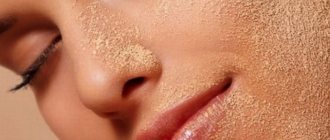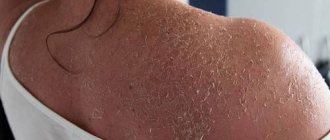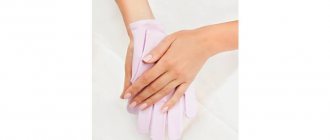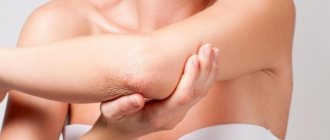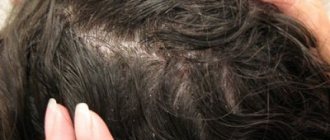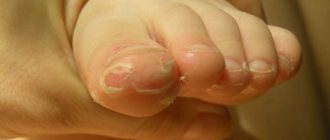The main causes of moisture deficiency in the skin
The skin does not become dehydrated just like that. This is preceded by a number of reasons, some of which every woman encounters every day.
Heat and exercise
When we sweat, we lose moisture. And along with it - sodium and potassium ions, which, in particular, are part of the skin's natural moisturizing factor. Therefore, after a hot day, as well as after a session in the sauna/bath or after intense physical activity, moisturizing care is required.
Abuse of sun exposure
As a protective reaction to ultraviolet radiation, the outer layer of the skin, the epidermis, thickens. If this happens abruptly, then the skin cells do not have time to fully mature and form the necessary connections. As a result, microcracks form through which moisture evaporates.
Dry air
From this point of view, both heat and frost are equally harmful. After all, the skin is naturally moisturized not only from the inside, but also from the outside. When there is not enough moisture in the air, its deficiency also occurs in the skin.
Air conditioning and/or central heating
These benefits of civilization greatly dry out the air in the rooms where we spend most of our time. This has an extremely adverse effect on the skin.
Tap water is too hot and/or too hard
To maintain the beauty and health of the skin, cool, soft water is optimal. So, when contrast douches or showers are recommended to you, the word “contrast” should not be taken literally: a temperature difference of 10–15 °C is useful.
Soap and improper skin care
Not only soap can dry out the skin, but also a regular washing gel designed for a different skin type. Do not cleanse dry skin with products intended for oily skin, and vice versa. By the way, among shower gels it is also better to choose those that contain moisturizing ingredients and oils.
Chlorinated pool water
Moisturizing cream for the face and body is a must-have in the bag you take to the pool.
At an altitude of 10,000 meters, the air humidity on board an aircraft is far from the optimal level for the skin. Therefore, before the flight and after it, make moisturizing masks. And take a mini bottle of thermal water on board. Apply it correctly: spray on your face and blot your skin with a napkin, otherwise the dryness will worsen.
Sea water
On the one hand, it is a storehouse of useful substances. However, after swimming in the sea, you need to take a shower to wash off the salt - it draws moisture from the skin.
Neglecting moisturizing cosmetics
Even at a young age and regardless of specific skin problems, we must not forget about moisturizing. After all, the functionality of this organ depends on the level of moisture.
Insufficient water consumption
Drinking drinking water in sufficient quantities helps improve cell functioning, moisturize the skin, and increase its elasticity. Insufficient fluid intake forces the body to use up its own reserves. As a result, the skin loses tone and looks saggy and wrinkled.
The recommendation to drink 2 liters of water per day can be considered average. In fact, everyone has their own norm, at the rate of 30 ml per 1 kg of weight. So for a petite girl, even one and a half liters may be too much. But if there is not enough fluid in the body, then there will not be enough fluid in the skin.
Excess salt in the diet
Yes, salt attracts water, causing swelling. You probably had the opportunity to verify this the next morning after a late dinner with an abundance of salty dishes.
Smoking, alcohol
Both lead to intoxication. The body, trying to get rid of toxins, does its best to reduce their concentration, and to do this it “mobilizes” water from everywhere, including from the skin.
Hormonal changes
First of all, we are talking about a decrease in the level of female sex hormones. After all, they are largely responsible not only for an attractive look, but also for moisturizing the mucous membranes and skin.
Possible complications
Dehydration of the facial skin can lead to residual effects such as:
- deep wrinkles,
- change in skin color in certain areas,
- the appearance of pigment spots, areas that begin to peel off at the slightest change in the environment, cosmetics.
Dehydration of the facial skin is typical for any skin type if care rules are not followed. Signs of dehydration appear when using inappropriate skin care products. The right choice of funds, nutrition and lifestyle will maintain the tone of the body as a whole.
Article design: Natalie Podolskaya
Signs of dehydrated skin
You can calculate dehydration yourself: focus on the sensations and appearance of your skin. There are several simple signs of dehydrated skin.
Gray color and dullness
Do you notice that instead of rosy and glowing skin, your face has a dull, almost gray tint? This is the first sign of his dehydration. Moreover, it is typical for all types of dermis.
Why does the skin become dull when dehydrated? The thing is that it stops renewing itself, and the accumulated dead cells make the face gray and lifeless.
Dryness and tightness of the face
If your skin is dehydrated, you may often feel discomfort and tightness. After washing, the dermis becomes drier and withering. Moisturizing cosmetics help for a short time.
Appearance of wrinkles
Wrinkles suddenly begin to appear and your skin loses its elasticity? Don't rush to use anti-aging products. After all, the cause may be skin dehydration. Without sufficient hydration, the face quickly loses its youth.
Oily shine
Dehydrated dermis produces large amounts of sebum, a substance that prevents moisture loss. Therefore, an oily sheen appears on the face.
Hypersensitivity
If the skin is dehydrated, it becomes more sensitive. Redness often occurs on the face. Areas of irritation can be difficult to make invisible. Environmental factors have a particularly negative impact on such skin.
Itching
Peeling may appear on dehydrated skin. They cause discomfort and itching.
Areas of inflammation
Dead cells accumulate on the surface of the face. Such areas are habitats for pathogenic microorganisms. Therefore, pimples, redness and blackheads appear on the face.
Uneven surface
Enlarged pores are a common sign of dehydrated facial skin. As a result, the surface of the face becomes lumpy and uneven.
Diagnostics
Skin diagnosis is carried out using various methods, from visual examination to taking smears and analyzing biological fluids.
Dehydrated facial skin - anyone can identify the signs upon careful examination: dryness and itching, a feeling of tightness and irritation, wrinkles
Diagnostic methods are divided into types:
- Visual inspection. Skin color, its elasticity and relief, pattern.
- Palpation examination. The degree of skin dehydration is checked by recovery after indentation and after grasping the skin between the fingers. The methods are rarely used.
- Hardware methods involve the use of devices and their non-invasive effects for diagnosing skin diseases and the functional state of the skin.
Methods of hardware diagnostics of the skin are:
- Corneometry. The electric field generated by the sensor penetrates the skin 10-20 nm into the stratum corneum. This layer of skin is sensitive to changes in water balance. The moisture contained in the stratum corneum changes the capacitance of the sensor capacitor and these changes are the result of the study.
- TEWL test. The partial pressure of moisture in the skin is measured by sensors, which cause an increase in pressure. The interpretation of the result will depend on skin type, age, and chronic skin diseases.
Today's medicine has in its arsenal a number of methods for hardware diagnostics of the skin.
- Sebumetry. An indicator tape sensitive to lipids inside the skin is applied to the skin and the result is obtained based on the change in optical density. The method shows the work of the sebaceous glands, the level of the lipid layer playing a barrier role in retaining moisture in the skin.
- Optical coherence tomography. A method using B-mode ultrasonic waves. The refractive index of these waves is sensitive to moisture in the skin and its value serves to evaluate the optical properties of the skin. Used to assess the functional state of the skin.
- Ultrasound scanning method. Evaluates the degree of skin hydration, thickness of layers and their structure.
- MRI. Contained moisture changes the signal image and reflects metabolic activity in different areas of the skin.
- Skin hydration is assessed using methods such as indentation, longitudinal deformation, and torsion with devices. The methods are not very common because they are not convenient in the technique of implementation.
The temperature of the skin depends on the level of its moisture content and heat transfer during its evaporation. Temperature is measured with a thermometer or thermocouple - a non-contact sensor using infrared radiation. Diagnostics are carried out in aesthetic medicine clinics, skin clinics, and diagnostic centers.
Care for dehydrated skin
Dehydration is dangerous because it always entails premature aging of the skin. Therefore, it is necessary to provide the skin with proper care and hydration.
Thermal water
Perhaps this is the fastest remedy with which you can replenish the moisture supply of the upper layers of the skin in just a few seconds. Use thermal water to wash your face and throughout the day to moisturize your skin. This is especially useful for those who spend a lot of time indoors.
Spray thermal water every three hours directly on top of your makeup - it will not suffer from it. To moisturize the skin, you can also use any non-carbonated mineral water containing trace elements and salts (at least 15-35 mg/dm3). Just pour the liquid into a spray bottle and the moisturizing spray is ready.
Moisturizing cream
It is better to use water-based creams as a moisturizer for dehydrated skin. To ensure that the water they contain evaporates more slowly from the surface of the skin, special components are added to creams that create a thin protective film on the surface of the skin, which literally “locks” the moisture inside.
These are polysaccharides, hyaluronic acid, linoleic acid or linolenic acid, urea (carbamide), natural oils (avocado, shea, jojoba).
Peeling
By removing the layer of dead cells, the skin's natural hydration process improves. Therefore, it is necessary to cleanse the skin once a week using delicate peelings, for example, gommage or a special film mask.
More frequent use of scrubs, on the contrary, will lead to a thinning of the protective layer of the skin, which will lead to accelerated evaporation of moisture from the epidermis.
Apply the scrub to a damp face, excluding the area around the eyes, using light movements of your fingertips along the massage lines.
Soft peeling recipe for any skin
Mix 1 teaspoon of lemon juice, 1 tablespoon of semolina, 1 tablespoon of sour cream, apply the mixture to your face. After 10 minutes, remove with a cotton pad soaked in water, and then rinse with boiled water.
Moisturizing masks
Masks for dehydrated facial skin not only saturate the skin with moisture, but also nourish it. Masks prepared at home from natural ingredients can satisfy the needs of dehydrated skin.
Grape mask for dehydrated, dry and mature skin
Mash 3-4 grapes with a fork, add 1 yolk, 1 teaspoon of honey, 1 tablespoon of vegetable oil. Mix all ingredients thoroughly and apply to face for 20-25 minutes. Rinse with boiled water.
Curd mask for any skin type
Mix 1 tablespoon each of cottage cheese, banana pulp and sour cream. Apply the mask on your face for 15 minutes, rinse with boiled water.
The course of procedures consists of 20 masks, 2-3 times a week, then maintenance 1-2 times a week.
What to do when your facial skin is very dry and flaky
Use warm water for dry skin
Make sure the time required for showering is short. Along with this, be sure to shower with warm water as too much hot water on the skin can dry out the natural oils thereby instantly drying out the skin. It would be better to use soaps and face washes that are gentle as they will help reduce the risk of moisture stripping. Consider the steps to take care of dry skin.
Don't wipe your face dry
After a shower, never rub yourself with a towel to dry, instead blot dry excess water. This will help you keep your skin soft and supple while helping you reduce the risk of skin irritation. As soon as you get out of the bath, be sure to moisturize your skin! A humidifier does not add moisture to your skin; however, it helps your skin retain the water already present in it. So after a bath is the best time to apply lotion!
Use a moisturizing toner for dry skin
Make sure the moisturizing lotion you use contains dry skin ingredients such as dimethicone which is silicone and traps moisture. Hyaluronic acid, mineral oil, and petroleum jelly are all considered beneficial for the skin.
Do not use anti-aging cosmetics on dry skin
Anti-aging products are a strict no for dry skin. However, if you use any, make sure they do not contain retinoids, as they will irritate dry skin.
Try fish oil tablets
Some oils also work best when taken orally. Research shows that fish oils such as cod liver oil may help soothe dry skin mainly due to its omega-3 acids.
Exfoliate dry skin
It is good to scrub your skin at least twice a week. If you have sensitive skin then once a week. Make sure you use products that are appropriate for your dry skin and ensure that the product is of a high quality brand.
Consult a dermatologist
If you try everything and still have very dry skin, you may have a skin problem and should see a doctor.
What do beauty salons offer to restore dehydrated skin?
Mesotherapy can quickly restore dehydrated skin, saturating it with moisture for a long time. During the procedure, a mixture of vitamins and hyaluronic acid is injected under the skin using a thin needle. In the subcutaneous layer, blood circulation increases, metabolic processes accelerate, and cell renewal occurs faster.
Biooxytherapy is a method of exposing the skin to a high-speed stream of pure oxygen, which penetrates into the deepest layers of the epidermis without disturbing the integrity of the stratum corneum of the skin. As a result, the skin is not just moisturized. She starts to breathe.
Basic tips for caring for dehydrated skin
To cope with facial dehydration, it is important to follow these rules:
- Drink enough fluids throughout the day
- Use mineral water to wash your face or soften hard tap water.
- Use suitable cosmetics
- Eat more fruits and vegetables
- Avoid spicy and salty foods
- Sleep at least 8 hours a night
- Give up bad habits
- Eliminate passive smoking
- Remove makeup before bed
- Monitor indoor humidity
And remember – prevention is always better than cure. Be beautiful!
